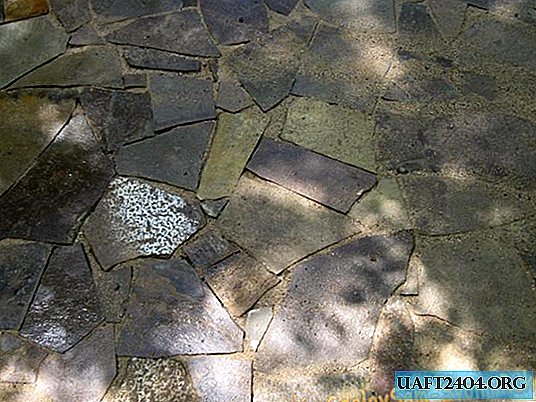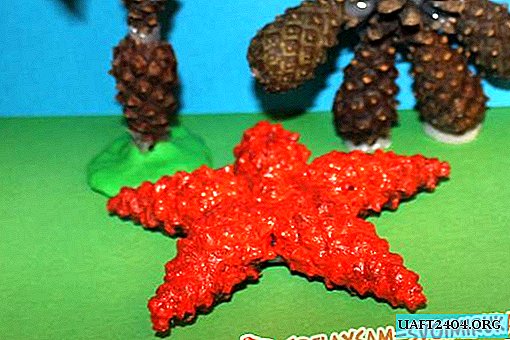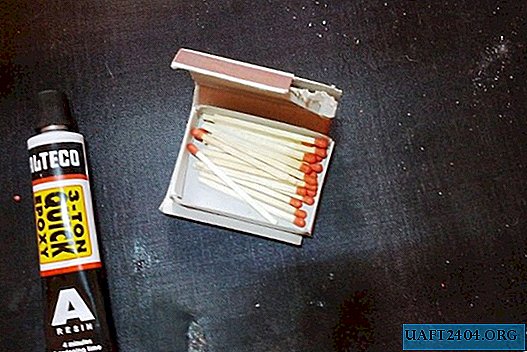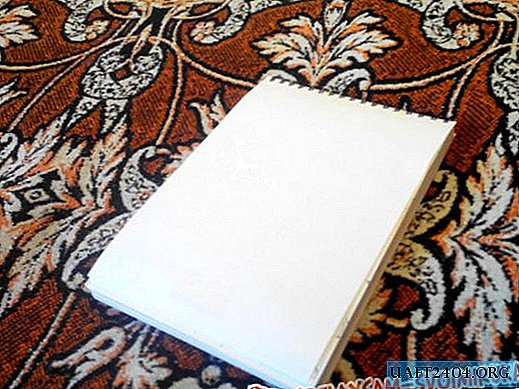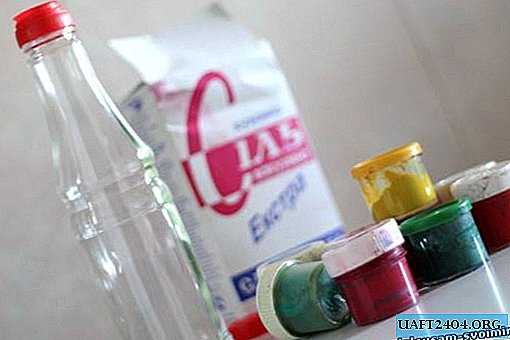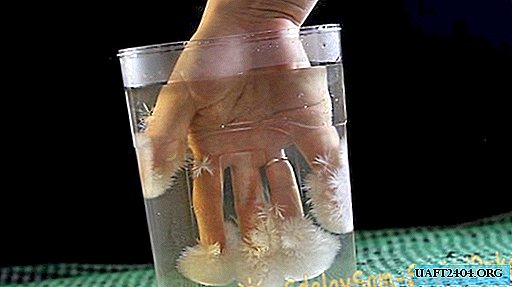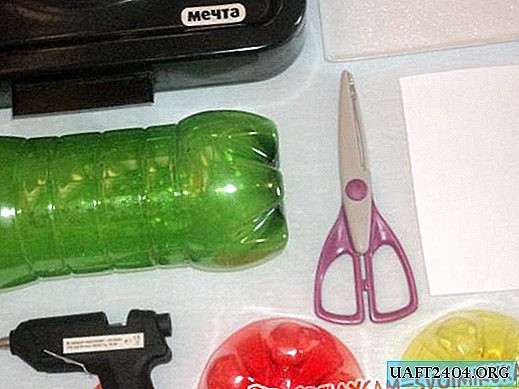Share
Pin
Tweet
Send
Share
Send
Materials for work:
1. Self-adhesive decorative film - the height and width of the door;
2. Bottle - spray - 1 piece;
3. Paint - spray - 1 cylinder;
4. Acrylic colorless varnish - 1 can;
5. Round brush (squirrel), wide brush (bristles), plasticine, varnish, gouache paints, scissors.
Stages of the work:
The first stage: mask the bulges and hollows.
For smooth application of paint, we remove all the bulges from the door (cut off with a knife or grind with sandpaper).
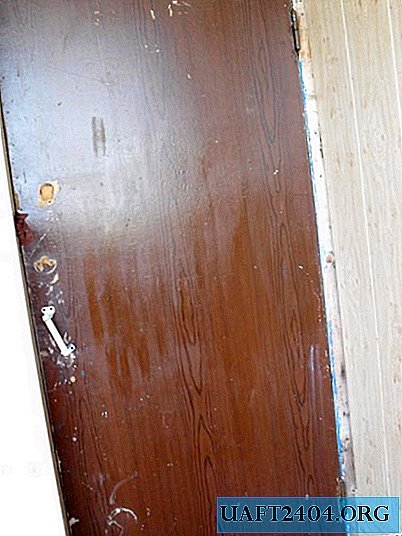
We dent dents with plasticine.
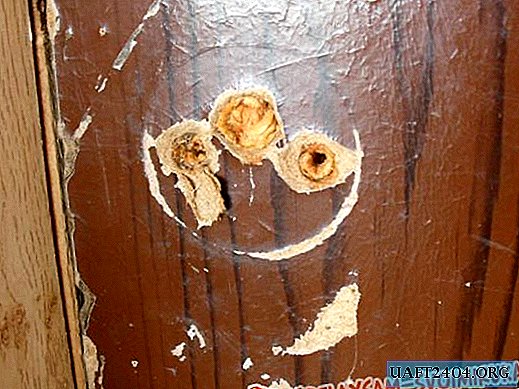
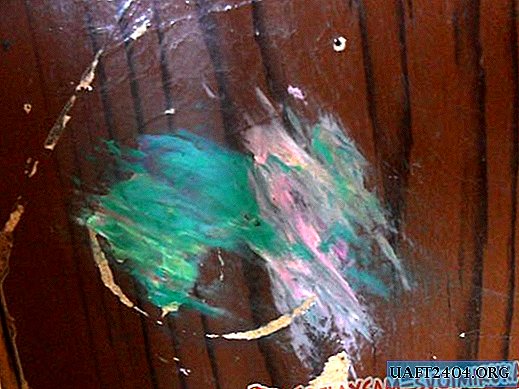
The second stage: preparing the basis.
Narrow strips along the length and width of the door (in the presented embodiment, 4 strips) according to the hatching on the back side of the self-adhesive film. By the number of joints of narrow strips we cut squares of adhesive tape 4 x 4 in size (16 pieces).

We first glue vertical strips on the previously degreased surface of the door (at approximately equal distance from each other).

Then we glue horizontal stripes.

We mask the joints of the strips with squares, placing them at an angle (in the form of a rhombus).


We close the joints of the door with the walls (fixing plastic tape or old wallpaper with construction tape).

Third stage: apply basic paints to the entire surface.
We cover the entire surface of the door with blue paint. For this part of the work, it is more convenient to use a spray. Dry according to the instructions on the bottle.

Pour green paint into a small spray bottle (you can dilute gouache with water or use color paint). Visually divide the door into the "heavenly" (upper) and "sea" (lower) parts. We make uneven spots on the bottom of the door.

On the upper and lower parts of the door we make white paint splashes.


With a dry dry brush we apply chaotic strokes on the raw paint.


Fourth stage: draw a horizon.
Across the door we draw a clear, narrow, white strip. Until the paint has dried, we apply blue strokes on the upper and lower parts of the strip, smearing the clarity of the color transition. When applying up-down-up smears, the colors are mixed, giving a new color and forming a smooth transition.

Edges of blue color shade blue.

Closer to the edges of the door we expand the width of blue and blue strokes.

Fifth stage: we form a sunset.
Above the blue horizon, we draw an irregularly shaped red strip. You can apply “yellow strokes” on the “raw” one.

Stroke even higher with dark red paint. Add in the center of the red - white, remove the whiteness to the sides.

Below the blue horizon, we draw a red strip already upper, trying to simulate a mirror image.

Add yellow strokes to the redness of the horizon. We draw the glare of sunset on the marine part of the door (by making several brush strokes red and immediately yellow).


Sixth stage: we draw the sun and its glare.
Using the ocher color (or a mixture of yellow with a drop of red), draw a circle on the redness of the horizon.

We give the paint a little dry and smear the paint that has not dried up with transverse strokes to the center of the circle.

In yellow, we draw the specular glare of the sun under the horizon.

Between the yellow glare of the mirror reflection of the sun, we make several white strokes. In the center of the sun we whiten the brush in circular motions.

Extend the white highlights, gradually narrowing the strokes. Add a little yellowness over white.

Once again, we whiten the middle of the sun and expand the highlights under the horizon, adding a drop of green to the yellow paint.

Seventh stage: we form the sea.
Divide the sea in half in a semicircle, erasing a strip of irregular shape with a blue paint (with a wet cloth - until the blue base appears). The upper part of the sea is blue, applying wide strokes of a mixture of white and blue colors.

The lower part of the green sea is again divided by the blue, wiping the strip with a wet cloth.

The bottom of the green sea is made even greener (by applying long strokes with a mixture of green and yellow colors). It will already be the shore.

The eighth stage: we revive the waves.
The joint of the colored stripes is drawn in white.

We smear still crude paint, erasing clear borders of color.

We connect the green of the sea and the whiteness with dark blue strokes.

Apply blue strokes to the bottom of the sea.

The upper part of the sea is decorated with irregular stripes of blue and blue.

Under them, we make a white brush with a wide brush.

On top of the waves put a few yellow “pokes” with a small brush.


With yellow “pokes” we extend the solar flare, gradually expanding it.


The ninth stage: we draw clouds.
In the upper part of the door we randomly apply white strokes.

Without letting the paint dry, stroke the edges of the clouds in blue. Blue spaces between the clouds.

Gently in blue we “poke” the transitions of clouds into the sky (with a wide brush).

We poke the top of the clouds in white. You can randomly add yellow “pokes”.



"Poke" the inter-cloud space with dark blue paint, concealing the excess blue.


Tenth stage: final.
Having thoroughly dried all layers of paint, remove the sticky strips.


Varnish the entire surface of the door with acrylic varnish.

And we admire our creativity, proudly showing it to the invited and uninvited visitors of the family hearth.


Share
Pin
Tweet
Send
Share
Send


